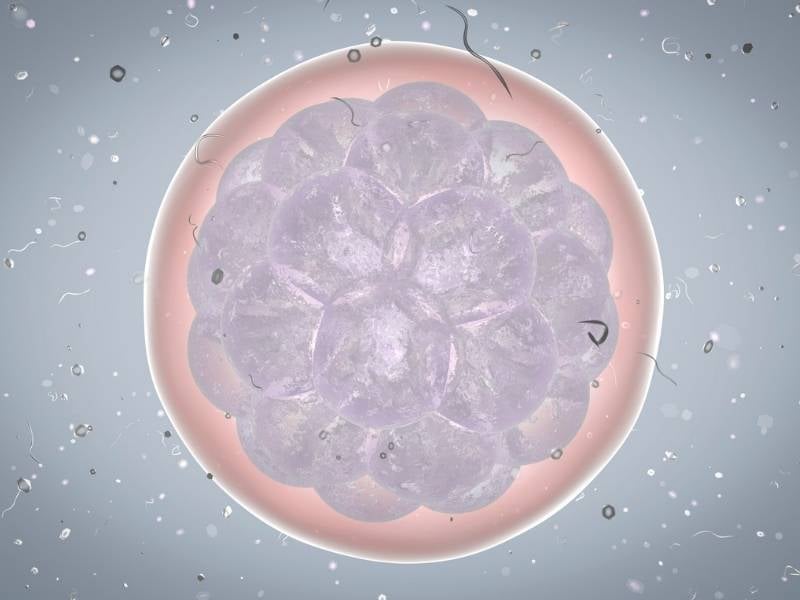You may be surprised to learn that the “birth” of in vitro fertilization (IVF) is not of this century but began centuries prior in the 1800s. The story of IVF may sound like it’s written for a science-fiction novel but in truth, it is well documented in prestigious medical journals dating back before our time.
The story of IVF in the U.S. marks the beginning of millions of babies born to date through technology and advanced reproductive procedures, each one making its historical mark on our great nation.
The 1800s
In the mid-1800s, scientists finally discovered that pregnancies occurred from a combination of sperm and egg. Prior to that time, it was not understood why semen caused conception and what women produced that allowed for pregnancy.
Shortly after that discovery, a physician named Dr. Sims at the Women’s Hospital in New York performed fresh intrauterine insemination from the husband’s sperm. This created one pregnancy that ended in miscarriage. Fertility treatment mostly consisted of gynecological surgery at that time.
In 1884 Dr. William Pancoast in Philadelphia performed the first donor insemination using sperm from the medical student voted “best looking” in his class. It was anonymous, and both the husband and wife were not even informed that a donor was being used until years later. Luckily, the husband was elated; however, this dishonesty and lack of informed consent would not be acceptable today.
The Early 1900s
In the early 1900s, much research was done on hormones and how they related to fertility. The first infertility clinic opened in 1926 in Massachusetts. In 1934 Gregory Pincus performed IVF-like research on rabbits but was fired from Harvard due to his controversial research. His top researcher Menkin was hired by Dr. Rock in New York and began human IVF research.
At Columbia Hospital down the street in New York in 1951, Dr. Landrum Shattles used the Rock-Menkin protocols to duplicate the experiments. In 1965, at Baltimore’s hospital, Dr. Jones worked with Dr. Edwards of England and fertilized the first human egg in vitro. In 1968 back in England, Dr. Edwards joined Dr. Patrick Steptoe and used a Laparoscopy surgery to retrieve an egg and fertilize it in vitro (in the lab). They published the results in the journal Nature in 1969.
The political opinion of IVF and governmental regulations of research was still evolving. More Americans were accepting of the concept but the Pope was adamantly opposed.
The 1970s
On September 12, 1972, at 8 a.m., a surgery was taking place in a hospital in Brooklyn. Dr. William Sweeney retrieved five eggs from a female. The woman’s husband took the eggs in a taxi five miles across town to give them to Dr. Shettles at Columbia-Presbyterian Hospital. The husband then went into a collection room and produced a fresh ejaculate to be used to fertilize the eggs.
By 2 p.m. the hospital chairman learned about the experiment and forbid the embryos to be transferred back to the mother. The husband was informed at 4 p.m. that evening and the wife was informed by 9 p.m. while she was still recovering from surgery. This would have been the first case of IVF with embryo transfer but it was stopped prematurely.
Three years later in England in 1975, Drs. Edwards and Steptoe announced the first successful pregnancy created from IVF; however, it ended in an ectopic pregnancy. But by 1978, the first successful live birth from IVF was announced by Drs. Edwards and Steptoe in England. Lesley Brown gave birth to her daughter, Louise Joy Brown, who was healthy in every way. While the birth of a test tube baby shocked the watching world, it had been a century in the making.
The 1980s and 1990s
After wading through more regulatory hurdles, the first U.S. IVF clinic was opened by the Jones doctors in Virginia. The race was on but Australia was the second county to announce a test tube baby in 1980. The U.S. announced the birth of IVF baby Elizabeth Carr in 1981.
What happened after the birth of Elizabeth Carr can be described as “viral” in today’s terminology. The following advancements in In Vitro Fertilization (IVF) took off like wildfire:
-
- Fertility Drugs were improved.
- IVF egg retrievals began to be performed vaginally instead of by laparoscopy.
- Intracytoplasmic sperm injection (ICSI) allowed men with low sperm to become fathers by 1991.
- Embryo transfers slowly moved from day 1 to day 3 and are now performed on day 5 by all outstanding fertility centers, as embryology labs became capable of culturing embryos safely for longer periods of time.
- “live-cam” 24-hour footage became available to monitor cell division.
- Embryo biopsy techniques evolved to safer and more accurate prediction of the genetic makeup of an embryo – attempting to improve pregnancy rates and lower the risk of multiple gestation and miscarriage.
- Comprehensive Chromosome Screening (CCS) of the whole embryo genome (24 Chromosomes).
Now
Newest studies surrounding IVF focus on using Next-Generation Sequencing (NGS) for pre-implantation genetic diagnosis (PGD). The technology emerging from NGS will allow fertility specialists to help patients with compound point mutations and small deletions and insertions (balanced and unbalanced translocation of the chromosome), as well as screening for single-gene disorders (ie. cystic fibrosis, tay sachs, etc.) using the latest qPCR-based validated technology with 98% accuracy.
The history of IVF has evolved more than any other field of medicine in such a short span of time. What once was considered the latest in medicine may now be labeled as outdated or barbaric. The future of IVF is in the “Omics” of science; genomics, transcriptomics, proteomics, and metabolomics.
The story of IVF may sound like it was written from a science-fiction novel but in truth, it is written by great scientists and thought leaders of our field. RMA is proud to be at the forefront of Molecular, Bioinformatics, and Clinical Research in the area of reproductive medicine. It is our mission to help each patient grow their family in the safest and quickest way possible.




